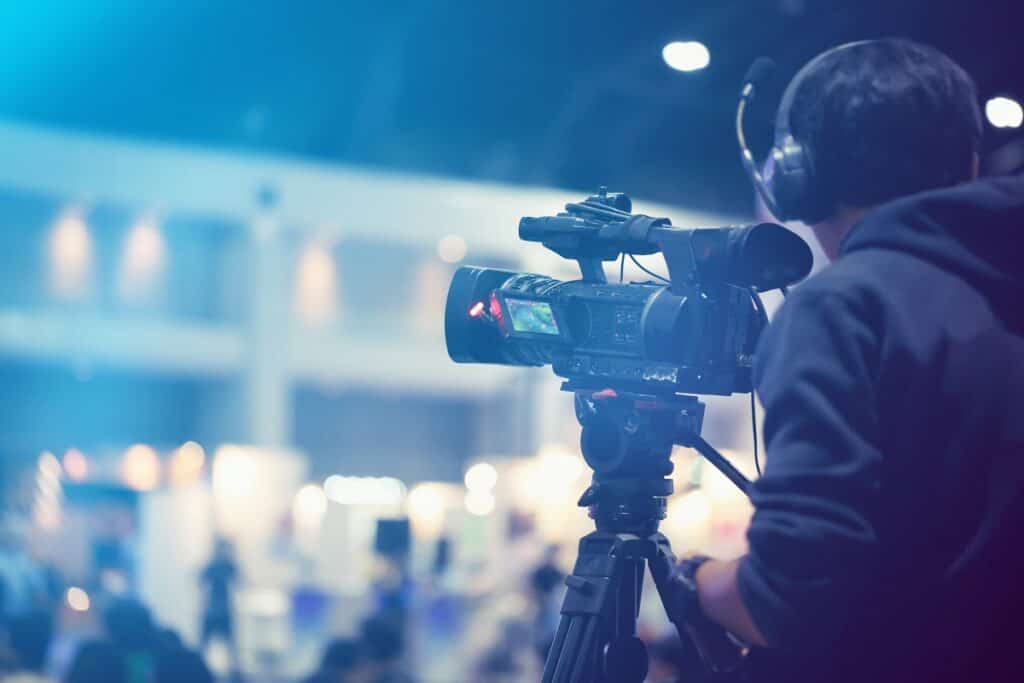You did it! The main event is booked and ready to go. The tickets are selling fast. Hype is starting to build at a healthy pace, driven by great social media posting. You are – dare you say it? – feeling optimistic about your upcoming event. Then it hits you: your audio-visual setup might unplug that momentum entirely. AV needs demand a great deal of planning and prep and may be poised to eat a huge chunk of your event budget. All of your carefully-planned placement for speakers, microphones, digital signage, and more could be in jeopardy because of one persistent issue lurking on the sidelines: in-house audio visual services restrictions.
What Are In-House AV Restrictions?
A common tactic used by hotels, event centers, and other rental venues, AV restrictions limit the access and ability of event hosts to bring their own devices without financial charges. These restrictions are built into the standard contract for a number of reasons:
- The electrical grid for the building may only be able to handle so much draw and needs to be monitored closely.
- Liability and insurance setups might require the venue to have direct oversight over any potential fire or shock hazards.
- Restrictions give the venue the “heads up” to veto any dangerous setups that could violate fire codes, occupancy issues, or accidentally set off the fire or smoke alarms.
- Built-in AV systems and installed equipment allow venues to “turn over” the space faster as one event ends and another begins.
These are each plausible, on-paper reasons a venue might give for restricting third-party / outside AV companies. However, each of these reasons is easily attributed to one main benefactor: themselves. In-house AV availability makes an attractive bullet point in a brochure, but it also gives the venue unprecedented control over how much to charge for access, when and how upgrades are rolled out, and which rental spaces (read: the expensive ones!) get the best AV setup availability.
By controlling the audio visual production services readily available, such as event lighting or sound, event centers also build in several other revenue streams: set-up and breakdown costs, electric hookup costs for show booths, and even “equipment rental costs” for must-have items like computer adapters that would otherwise leave presenters high and dry. In some cases, they might even restrict recording or streaming a presentation or event, forcing event planners to pay up in order to obtain digital media copies or open up live streaming.
Taken to an extreme in larger event spaces, these restrictions may even seep into non-AV services, such as booth construction setups or transporting crates and boxes from a building’s loading dock. This is very common in major city venues, who hand this work off to unions and are extremely strict – to the end of levying fines or even removing attendees – if anyone defies their terms. All of this presents a real headache for event planners attempting to pull off a successful event while keeping their overall budget tightly reined in.

How Do I Avoid In-House AV Restrictions?
The first and most important piece of advice for side-stepping restrictive AV issues in your event is to play by the rules. Attempting to circumvent or mislead a venue as to your intentions is the fastest way to make things unpleasant for everyone involved. You are not the first, nor will you be the last, renter attempting to sneak an extension cord in or hijack the event Wi-Fi for the bandwidth it can’t sustain. They will see your “stealthy” video camera, and there’s a good chance they will just as “stealthily” pad your post-event bill by the contract-designated fee for said videography.
Step 1: Determine exactly what the venue is offering, and at what cost
While their audio visual for events offerings are often presented as bundles or “all-inclusive,” you have a right to an itemized list before signing on the dotted line. There’s nothing worse than ending up anxiously close to event day only to find out that there was a BYOD clause and you were expected to bring your own monitor, or cables.
Your venue should be able to furnish an audio visual checklist, and ideally a la carte options within it, with prices for each item rental or service. If you only need two projection screens, for example, but they are charging the same price for 2 or 10, it may be time to consider other options, if only for the sake of scaled-down costs.
Step 2: Determine the venue cost to DIY with third-party audio visual production services
The more a venue attempts to actively dissuade you from using outside vendors, the more you should look closely into the “why” of their motivations (this is doubly true if they badmouth vendors or start listing the potential problems of vendors rather than the benefits of using their technology services).
Ask directly what the fee or charge would be for using an outside AV services provider, and be sure to request any setup or access fees as well. Although it may feel redundant, asking these questions clearly and directly – “What will my total, bottom-line cost be if I used a vendor for X, Y, and Z?” – and will prevent any unpleasant surprises when the bill comes due. This is especially true if you are beholden to the venue to support your WiFi needs.
Step 3: Determine what the vendor cost would be to DIY the same services
An apples-to-apples comparison can be tricky when a venue is being less than forthcoming, but this is a step worth doing well. Even though “all-inclusive” sounds good to the ear and suggests an easier time setting up your audio-visual needs, that isn’t necessarily true when it comes to WiFi for events. An outside AV vendor knows how to budget their time wisely prior to the event, and may even be familiar with the AV requirements of your venue of choice. Compare their costs against the cost + fee from your venue.
Step 4: Critically consider the performance capability of in-house AV equipment
Just because a piece of equipment is already physically located in the venue does not mean:
- It’s the best model to interface with your preferred equipment
- It’s the best on the market in terms of performance and clarity
- It’s the most cost-effective way to meet a need for audio-visual services
- It will be ready to go and problem-free when showtime arrives
- It’s the best choice for your event budget
Remember, chances are that a venue only has so many pieces of AV equipment and that the on-duty staff likely has minimal technical support capabilities. When hiring an outside audio visual services provider, you’re not only getting the professional-quality equipment you need, you’re also getting access to their expertise and company reputation. Murphy’s Law tends to be particularly vicious during special events and crucial keynotes, so don’t take chances with subpar equipment and the uncertainties that go along with it.
4 Smart Tips For Booking Event AV Services
- Make sure your potential external AV services are properly licensed and insured. A stray cable and a tumble can cost a great deal in injury litigation, and even overlapping event and venue insurance may not cover issues introduced by third-party equipment. Having this documentation in place is also a smart, easy way to weed out casual “gig” workers from legitimate AV providers.
- While it may seem counter-intuitive, start by shopping for audio-visual service providers first. These companies are motivated to secure your business, and that means they will often adjust their rates to be more competitive if the venue tries to put restrictions in place. You can also mention your venue of choice and ask for their equipment suggestions based on the size of your event: the companies that have worked in the venue before can move to your “shortlist.”
- Get any promises from your venue in writing, whether you’re using their AV systems or not. A verbal promise or agreement is worth the paper it’s not printed on, in terms of legal enforcement. This is a particularly important step if you plan on bringing in an outside AV provider for your event. The venue, having lost their potential AV rental or access fees, may try to recoup them through hidden charges and penalties.
- Be realistic about what your event will actually need. Upselling is common, both from venues and AV providers, because an overprepared client is usually much happier than one caught flat-footed and a few mics short. Can your attendees comfortably speak at a microphone stand or into a wired mic or are wireless microphones necessary? What is the smallest screen size still clearly visible from the back of the room? Critical questions like these will help you “trim the fat” and keep your AV procurement well within the event budget.
While there’s no guarantee that cables won’t get tangled or input sources won’t go wonky on the day of the event, the one thing you absolutely have the power to do is keep your proverbial wires from getting crossed. Don’t let slick venue marketing and packages back you into a corner when it comes to your audio visual services: research independent AV providers and ensure your message stays crystal-clear. Whether you’re planning a conference, sales kick-off, business workshop, concert, sporting event, or another type of meeting that requires large or small-scale AV production needs, trust the experts at Vario to support you with every aspect of your event.







